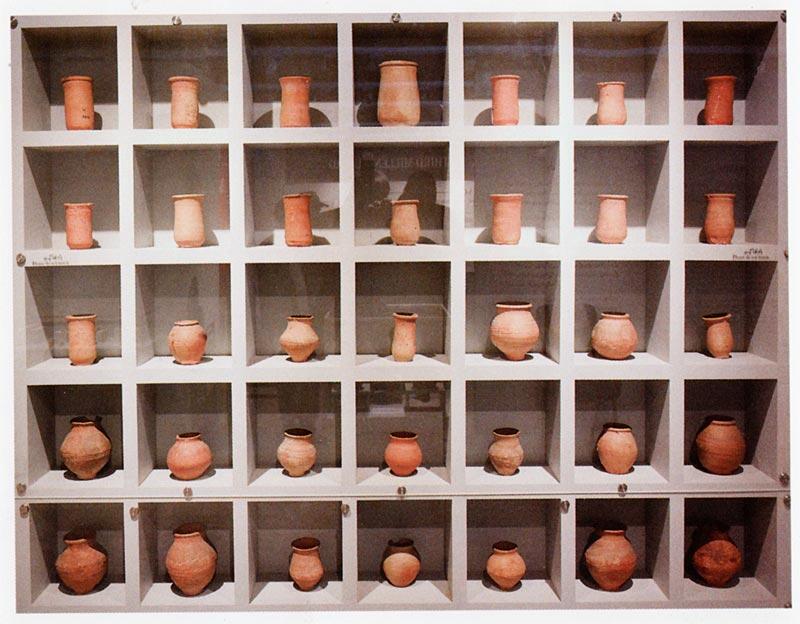March 12th, 2017
Rediscovering Harappa | Through the Five Elements A Special Exhibition at the Lahore Museum is an awesome catalogue that speaks to the process of coming to grips with Indus artefacts [1,2] at the Lahore Museum in 2016. A UNESCO project (one of 9 selected from 700 proposals in 2015), the swastika-centered [3,4,5] exhibition space displaying pottery by the prominent artist Sherezade Alam and Harappan potter Muhammed Nawaz [6], was itself surrounded by galleries featuring the five elements: water, earth, fire, air and ether in Indus objects from the museum's little-known 2,000 object collection that dates to the earliest days of Indus discovery.
Besides Zen-like displays, the exhibit featured newly-inspired works from Indus objects and drawings, like the Great Bath Model [7]; the Inheriting Harappa Project was about Educating the Public: Discover, Connect & Share (one of the essays by Zeb Bilal) with students from all over Pakistan attending and contributing. Another essay discusses The Indus Collections at the Lahore Museum (Sumaira Samad), while Editor and prime mover of the project Tehnyat Majeed opens with Exhibition, Engagement & Cultural Ownership. The final chapter, Harappa at Jahan-e Jahan Ara by Sherzade Alam, one of the country's foremost pottery artists, showcases an Indus-themed outdoor garden in Lahore.
While the paper-bound printed catalogue of Rediscovering Harappa | Through the Five Elements is not available, a free PDF (6.6 MB) of the entire fascinating, inspiring work that speaks to the the lasting resonance of Indus arts in modern Pakistan is.
1. Terracotta Goblets, Mohenjo-Daro and Harappa, 2600-1900 BCE, Terracotta, wheel-thrown, fired, 14.6 x 8.9 cm (tallest goblet), 13.9 x 8.3 cm (largest round shape)
2. View of the Water Gallery
3. Seal Harappa 2600-1900 BCE Terracotta, handmade, fired 1.6 x 1.6 cm
4. Pottery by Sherezade Alam displayed within acrylic swastika structure, Swastika Gallery
5. Gallery Floor Plan, 'Rediscovering Harappa'
6. Sherezade Alam, Harappan potter Muhammed Nawaz
7. Great Bath Model by Jabran A. Tariq, Anosh N. Butt (BNU); Hassan Bilal (Naqsh); Wafa Akhtar (KC); Uzair Rashid, Tariq Aziz (IUB), Terracaotta clay, fired, 35.5 x 25 inches (90 x 63.5 cm)7. Seal Mohenjo-Daro 2600-1900 BCE, Steatite, handmade, fired, 2.3 x 2.3 cm
8. Seal Mohenjo-Daro 2600-1900 BCE, Steatite, handmade, fired, 2.3 x 2.3 cm
9. Unicorn Seal, Mohenjo-Daro, 2600-1900 BCE. Steatite carved intaglio, fired, 5 x 5 cm
10. Lahore Museum, postcard from ca. 1905




















